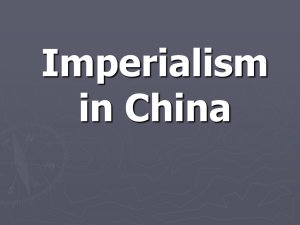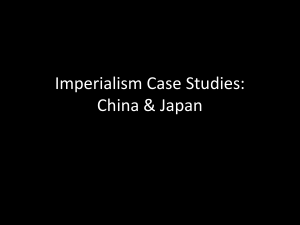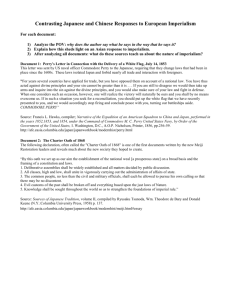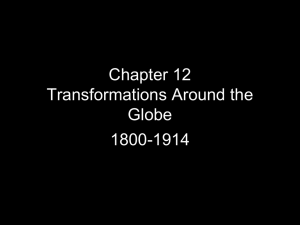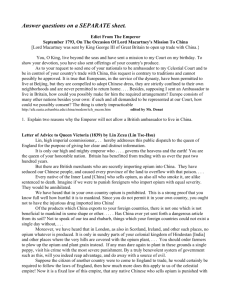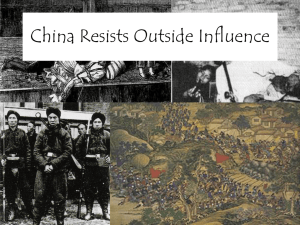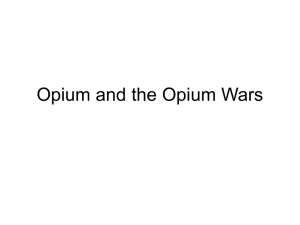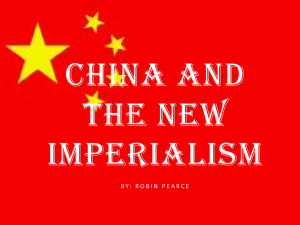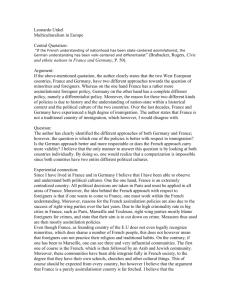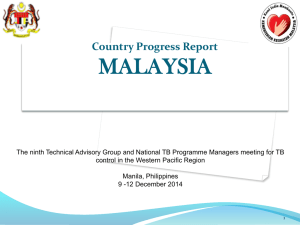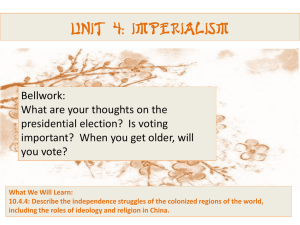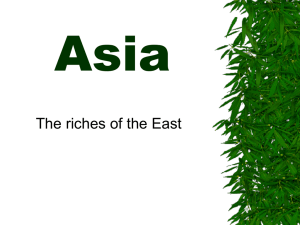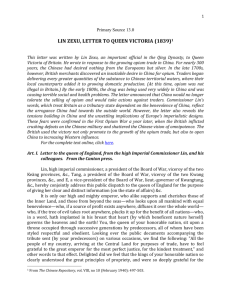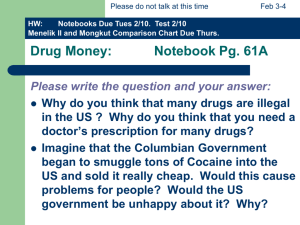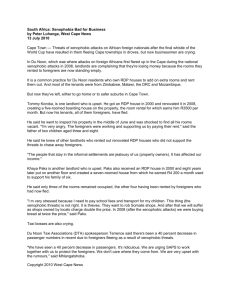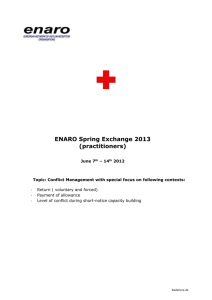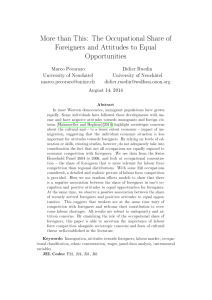CHINA BOTH JAPAN Political ~ Macartney Mission
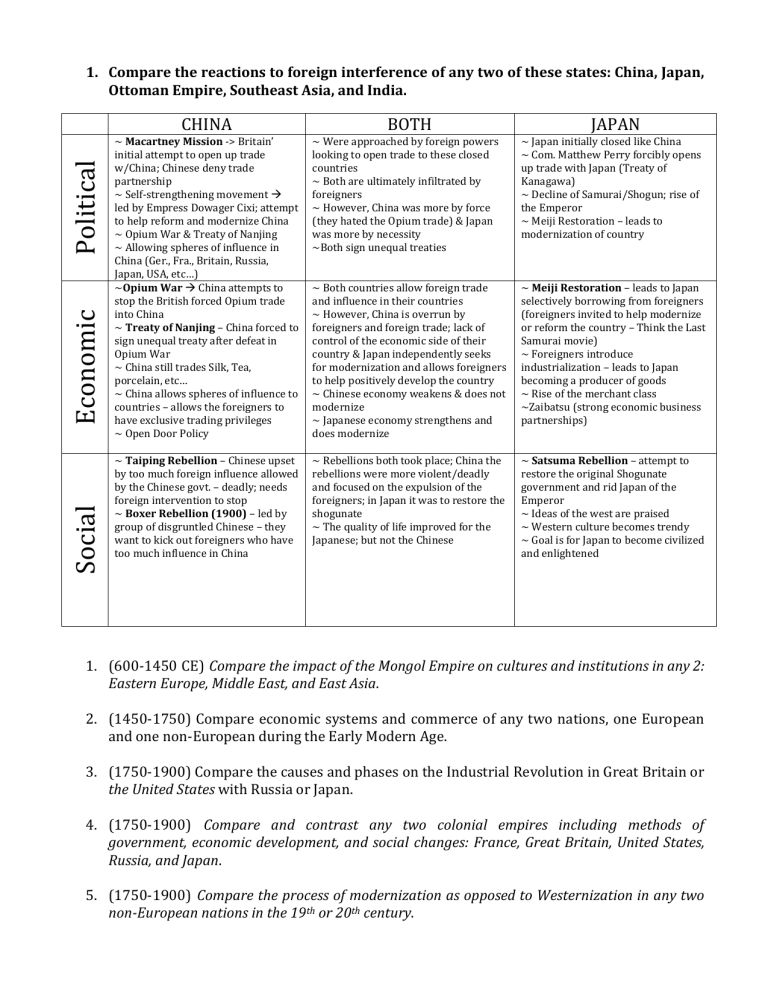
1.
Compare the reactions to foreign interference of any two of these states: China, Japan,
Ottoman Empire, Southeast Asia, and India.
CHINA
~ Macartney Mission -> Britain’ initial attempt to open up trade w/China; Chinese deny trade partnership
~ Self-strengthening movement led by Empress Dowager Cixi; attempt to help reform and modernize China
~ Opium War & Treaty of Nanjing
~ Allowing spheres of influence in
China (Ger., Fra., Britain, Russia,
Japan, USA, etc…)
~Opium War China attempts to stop the British forced Opium trade into China
~ Treaty of Nanjing – China forced to sign unequal treaty after defeat in
Opium War
~ China still trades Silk, Tea, porcelain, etc…
~ China allows spheres of influence to countries – allows the foreigners to have exclusive trading privileges
~ Open Door Policy
~ Taiping Rebellion – Chinese upset by too much foreign influence allowed by the Chinese govt. – deadly; needs foreign intervention to stop
~ Boxer Rebellion (1900) – led by group of disgruntled Chinese – they want to kick out foreigners who have too much influence in China
BOTH
~ Were approached by foreign powers looking to open trade to these closed countries
~ Both are ultimately infiltrated by foreigners
~ However, China was more by force
(they hated the Opium trade) & Japan was more by necessity
~Both sign unequal treaties
JAPAN
~ Japan initially closed like China
~ Com. Matthew Perry forcibly opens up trade with Japan (Treaty of
Kanagawa)
~ Decline of Samurai/Shogun; rise of the Emperor
~ Meiji Restoration – leads to modernization of country
~ Both countries allow foreign trade and influence in their countries
~ However, China is overrun by foreigners and foreign trade; lack of control of the economic side of their country & Japan independently seeks for modernization and allows foreigners to help positively develop the country
~ Chinese economy weakens & does not modernize
~ Japanese economy strengthens and does modernize
~ Meiji Restoration – leads to Japan selectively borrowing from foreigners
(foreigners invited to help modernize or reform the country – Think the Last
Samurai movie)
~ Foreigners introduce industrialization – leads to Japan becoming a producer of goods
~ Rise of the merchant class
~Zaibatsu (strong economic business partnerships)
~ Rebellions both took place; China the rebellions were more violent/deadly and focused on the expulsion of the foreigners; in Japan it was to restore the shogunate
~ The quality of life improved for the
Japanese; but not the Chinese
~ Satsuma Rebellion – attempt to restore the original Shogunate government and rid Japan of the
Emperor
~ Ideas of the west are praised
~ Western culture becomes trendy
~ Goal is for Japan to become civilized and enlightened
1.
(600-1450 CE) Compare the impact of the Mongol Empire on cultures and institutions in any 2:
Eastern Europe, Middle East, and East Asia.
2.
(1450-1750) Compare economic systems and commerce of any two nations, one European and one non-European during the Early Modern Age.
3.
(1750-1900) Compare the causes and phases on the Industrial Revolution in Great Britain or
the United States with Russia or Japan.
4.
(1750-1900) Compare and contrast any two colonial empires including methods of government, economic development, and social changes: France, Great Britain, United States,
Russia, and Japan.
5.
(1750-1900) Compare the process of modernization as opposed to Westernization in any two non-European nations in the 19 th or 20 th century.
